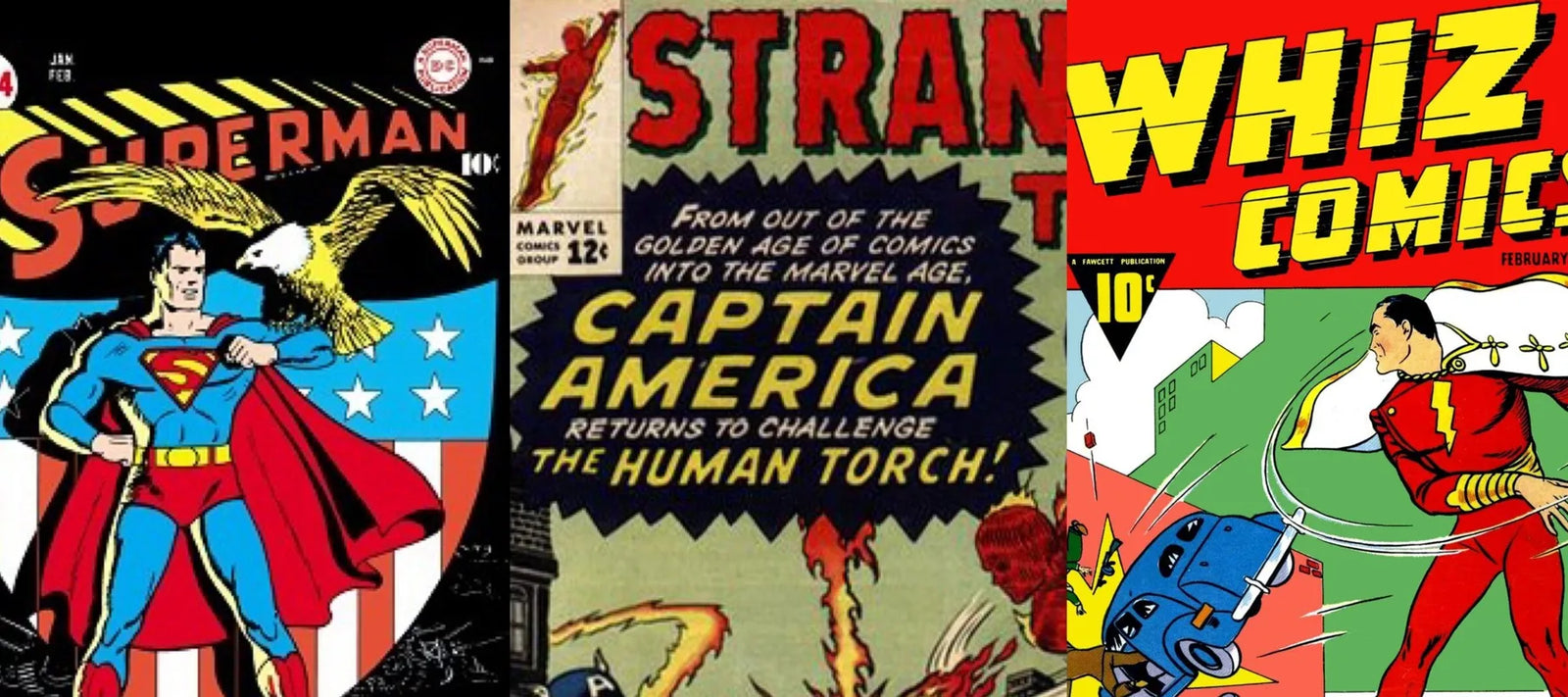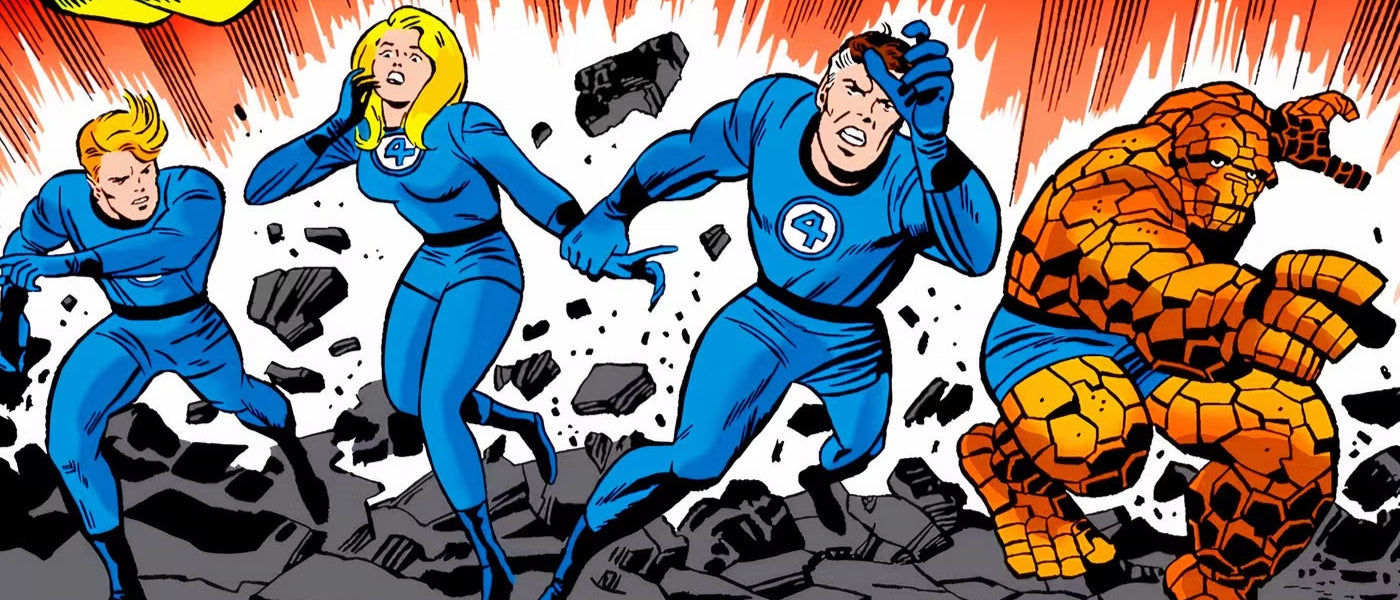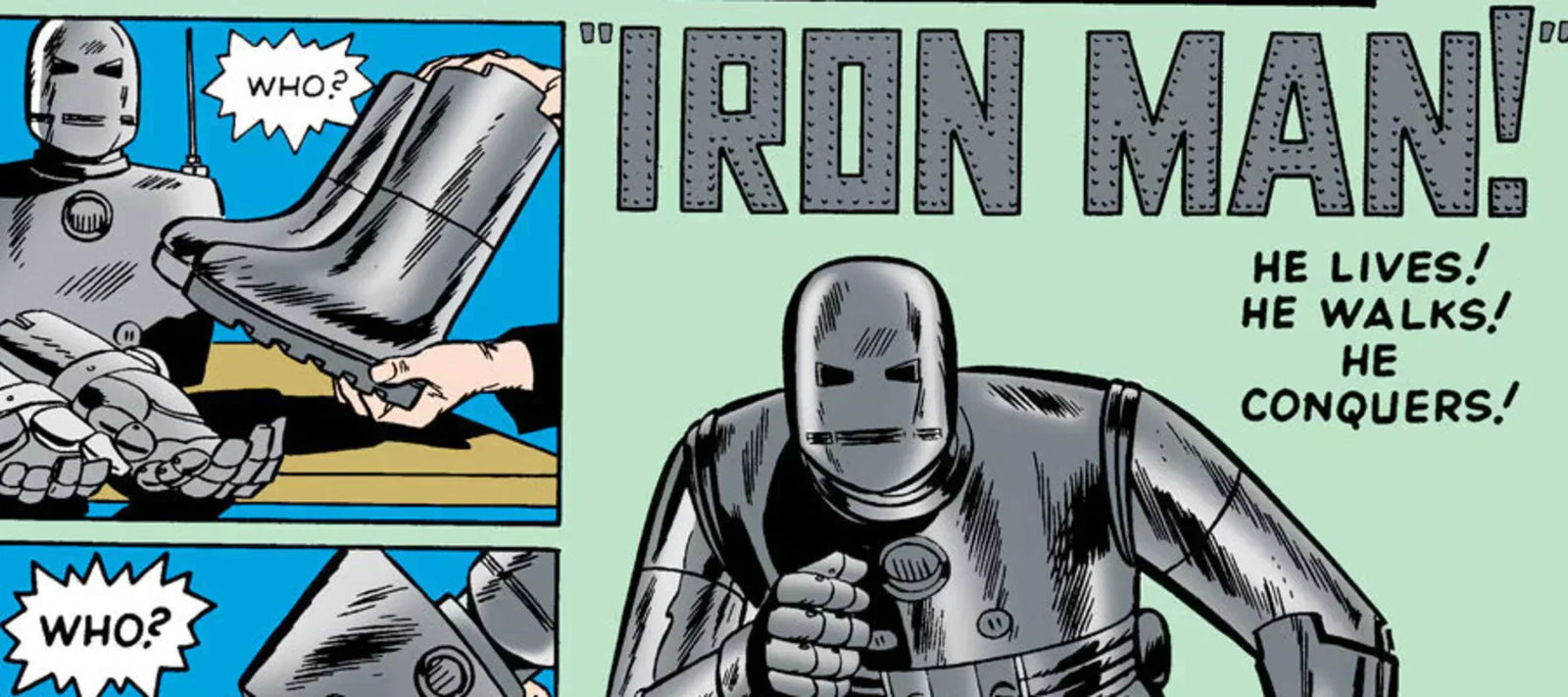
The History of Comics: From Golden Age to Modern Marvels
The history of comics is a rich journey through art, storytelling, and cultural evolution. From the patriotic heroes of the Golden Age to the cinematic icons of the Modern Era, each period of comic book history brings unique characters, styles, and values. Whether you're a longtime collector or just discovering the world of comic books, understanding the comic book ages helps unlock the significance—and the value—of these treasured stories.

The Golden Age of Comics (1938–1956): Where It All Began
TheGolden Age of comics started with the release of Action Comics #1 in 1938, featuring the first appearance of Superman. This era gave birth to legendary superheroes like Batman, Wonder Woman, and Captain America, setting the foundation for the superhero genre.
Why Golden Age Comics Are Valuable:
-
First appearances of iconic superheroes.
-
Limited availability in high-grade condition.
-
Historical significance as the origin of comic book culture.
Popular Key Issues:
Action Comics #1, Detective Comics #27, Captain America Comics #1

The Silver Age (1956–1970): The Rise of Marvel
The Silver Age of comics introduced a new level of storytelling, character depth, and interconnectivity—thanks in large part to Marvel Comics. Creators like Stan Lee and Jack Kirby brought readers Spider-Man, the X-Men, and the Fantastic Four.
Why Silver Age Comics Are Valuable:
-
Major first appearances and origin stories.
-
Start of the Marvel Universe as we know it.
-
High collector demand for these key issues.
Popular Key Issues:
Amazing Fantasy #15 (1st Spider-Man), Fantastic Four #1, X-Men #1
The Bronze Age (1970–1985): A Grittier Turn

The Bronze Age of comics introduced more mature themes, anti-heroes, and social commentary. Characters like Wolverine and The Punisher emerged, along with storylines that tackled real-world issues like drug abuse and corruption.
Why Bronze Age Comics Are Valuable:
-
First appearances of modern fan-favorites.
-
Shift toward realism and darker storytelling.
-
A bridge between classic and modern comics.
Popular Key Issues:
Giant-Size X-Men #1, The Amazing Spider-Man #129 (1st Punisher), Marvel Spotlight #5 (1st Ghost Rider)

The Copper Age (1985–1992): Creative Freedom and Innovation
TheCopper Age of comics saw the rise of independent publishers and more experimental storytelling. Graphic novels like Watchmen and The Dark Knight Returns redefined what comics could be.
Why Copper Age Comics Are Valuable:
-
Introduction of indie and creator-owned properties.
-
Unique art styles and groundbreaking story arcs.
-
Lower print runs on certain titles.
Popular Key Issues:
Batman: The Dark Knight Returns, Teenage Mutant Ninja Turtles #1, New Mutants #98 (1st Deadpool)

The Modern Age (1992–Present): A New Era of Heroes
TheModern Age of comics is defined by variant covers, crossover events, and the influence of blockbuster films. New heroes like Miles Morales and Kamala Khan have joined the ranks of comic book royalty.
Why Modern Comics Are Valuable:
-
First appearances of new, diverse characters.
-
Low print runs on key titles and variants.
-
Tie-ins to the Marvel Cinematic Universe and DC films.
Popular Key Issues:
Ultimate Fallout #4 (1st Miles Morales), Edge of Spider-Verse #2 (1st Spider-Gwen), Invincible #1
Why Comic Book Ages Matter to Collectors
Understanding the different ages of comic books gives collectors and fans deeper insight into why certain issues are prized. From the rare Golden Age originals to the modern Marvel milestones, each era has its own appeal, value, and collectible significance.
At Dad’s Comic Vault, we specialize in offering a wide range of valuable comic books from all eras—each handpicked with a passion passed down through generations. Whether you're hunting for your first key issue or looking to complete a set of vintage Marvel comics, we’re here to help you unlock the next chapter in your collection.
Ready to dive into comic book history?
Explore our comic vault for Golden Age classics, modern variants, and everything in between.



